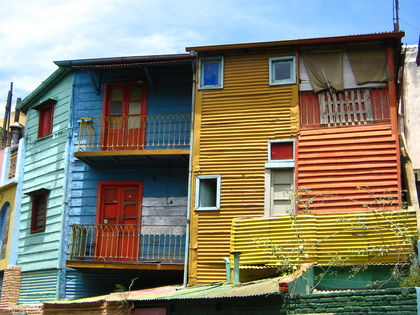Argentina - Poverty and wealth

There are deep disparities in income and wealth in Argentina. In 2000, the richest 10 percent of the population earned 36 percent of the country's income, while the poorest 10 percent earned 1.5 percent of income. About 36 percent of the population lives below the poverty line. The nation's poverty level is US$490 per month for a family of 4. The average wage in the nation is US$676 per month, which is more than 3 times the national minimum wage. About 60 percent of workers earn less than
| GDP per Capita (US$) | |||||
| Country | 1975 | 1980 | 1985 | 1990 | 1998 |
| Argentina | 7,317 | 7,793 | 6,354 | 5,782 | 8,475 |
| United States | 19,364 | 21,529 | 23,200 | 25,363 | 29,683 |
| Brazil | 3,464 | 4,253 | 4,039 | 4,078 | 4,509 |
| Chile | 1,842 | 2,425 | 2,345 | 2,987 | 4,784 |
| SOURCE: United Nations. Human Development Report 2000; Trends in human development and per capita income. | |||||
US$450 per month. About 20 percent of the population only lives on US$2 per day. As many as 8 million Argentineans work in the informal sector , or black market . In some areas of the country, the black market accounts for 60 percent of economic activity. These types of economic activities include personal service jobs (people who work as plumbers, electricians, domestic servants, and so forth). People who work in this informal sector also run small, unregulated shops and restaurants. Since these jobs are unregulated by the government, people do not pay taxes on their income and are therefore able to earn higher pay.
Government estimates are that 11 percent of the population cannot meet their basic food needs. Poverty rates are about 20 percent higher in the rural areas than they are in the urban areas. In the greater Buenos Aires metropolitan area the poverty rate is 29.8 percent, while in the subtropical jungle areas of the Northeast, the rate is 60 percent. The second-poorest area of the country is the mountainous region of the Northwest where the poverty rate is 53.6 percent.
Women make up a larger share of the poor. They comprise a large percentage (60 percent) of those employed in part-time or low-skill (and therefore low-paying) jobs. In overall terms, their poverty rates are twice as high as males. Children also have higher rates of poverty than the national average. About 50 percent of children under the age of 14 live in poverty.
Comment about this article, ask questions, or add new information about this topic: